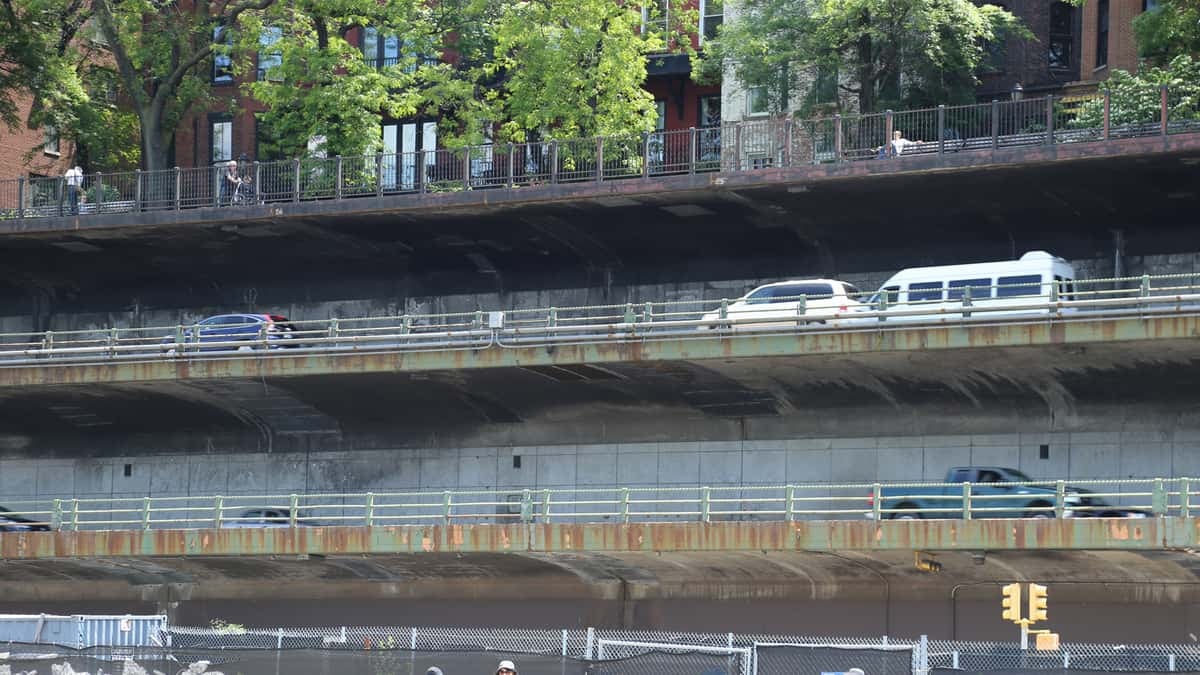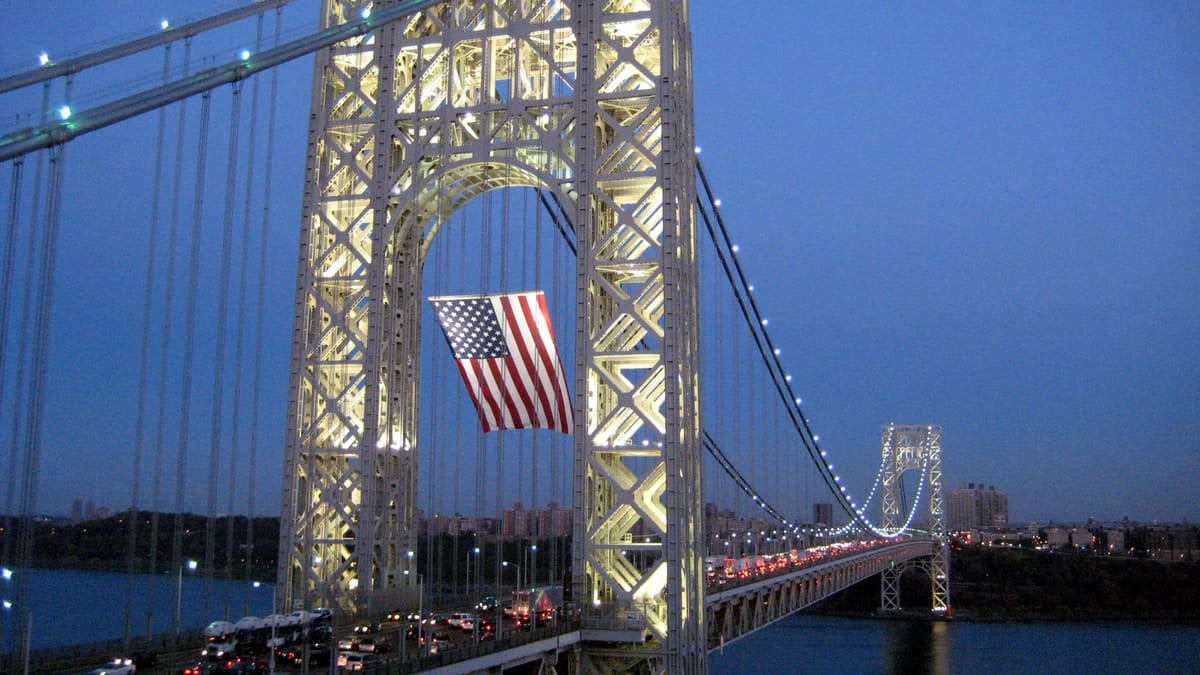After becoming the No. 2 gateway for seaborne containers in the U.S., New York and New Jersey need to pay more attention to landside issues that impact freight movements, including more innovative warehouse designs and locations and much-needed improvements to aging roadways and a major air cargo hub.
That was the major message from executives at two public entities tasked with boosting the region’s freight economy. In a webinar sponsored by the New York and New Jersey Roundtable of the Council of Supply Chain Management Professionals, Adam Lomasney, vice president of transportation at the New York City Economic Development Corporation, said the logistics industry there has the unique challenge of serving the largest consumer market in the most densely populated and one of the highest cost regions in the U.S.
Cities are “paying much more attention to warehousing and trucking and their impacts in terms of congestion,” Lomasney said. “It used to be that kind of development was welcome. But now we live in a different time when this kind of development is going to come with some costs.”
Anne Strauss-Wieder, director of freight planning at the North Jersey Transportation Planning Authority, noted the tremendous growth in the amount of ocean freight reaching New Jersey and New York ports.
Prior to the 2016 raising of the Bayonne Bridge, only about 1% of container vessels calling on the region were of 10,000 twenty-foot equivalent unit (TEU) capacity. But the higher air clearance after the bridge raising now means close to 30% of the container ships coming into New York Harbor are of 10,000-TEU capacity or more in 2019.
“That’s a seismic shift and a credit to our region that we have absorbed that kind of change, and instead of having more congestion at the ports, we have less.”
But the stuff coming through the ports is hitting a too congested New York City and its outlying areas.
In 2018, surface speeds reached an eight-year low of just around 7 miles per hour in the city’s central business district south of 60th Street, according to the New York City Department of Transportation. This is while New York City’s freight demand is expected to rise 68% by 2045, Lomasney said.

In April, the state passed a law authorizing the first congestion pricing scheme in the U.S. with tolls for all vehicles entering the central business district starting in 2021. The Trucking Association of New York opposes the toll, which is expected to be around $20 to $25.
The upshot of such moves is that the logistics industry needs to get creative in moving freight, with initiatives such off-peak delivery schedules and giving electric cargo bikes access to commercial parking in the city, Lomasney said.
That also extends to warehousing space and how to locate it closer to New York City rather than having freight trucked from warehouses in New Jersey and Pennsylvania.
Vertical warehouses, with the major U.S. example being the Prologis-built facility in Seattle, are the model for future warehousing within city limits.
But Lomasney reminded everyone that the Brooklyn Army Terminal, built for ships departing for World War II, was the prototype for a vertical warehouse that could be served directly by rail and ship. The site has since been redeveloped into use for industrial and manufacturing businesses.
Next year, groundbreaking is expected for a multistory, 1.3 million-square-foot warehouse in Brooklyn. Bridge Development Partners and DH Property Holdings are developing the 18-acre site, which will allow truck access on four floors.
Triangle Equities is looking to develop a three-story, 300,000-square-foot warehouse to serve air cargo coming through John F. Kennedy International Airport, adding to 600,000 square feet of private air cargo space that has come online in the last two years. Innovo Property Group is expected to open a 1 million-square-foot warehouse on 20 acres in the Bronx.
“Vertical warehousing was kind of laughed at originally, but it is now a very real thing,” Lomasney said.
But those warehouses will be of little value if the planes and trucks cannot deliver the freight. New York plans to invest $13 billion modernizing JFK Airport. While mostly focused on passenger traffic, Lomasney said part of the modernization will address cargo interests.
JFK’s freight roads “are very convoluted and the warehouse building numbers are difficult for truckers to navigate,” Lomasney said.
The state also will spend $1.5 billion on improving the Van Wyck Expressway/I-678 and the Kew Gardens Interchange, the main commercial vehicle routes serving JFK.
A more urgent issue though will be the need to address a 1.5-mile section of the Brooklyn-Queens Expressway/I-278, a major truck route for reaching a borough of 2.5 million people. That road has about 15,000 trucks passing over it daily.
“This is a big deal for anyone trying to move any freight through the city,” Lomasney said.
That segment features a double cantilever road design to allow two-way traffic, along with a pedestrian promenade on top. But that roadway is deteriorating much more rapidly than expected, according to The Wall Street Journal.

The city’s transportation department expected that the roadway would need to be reconstructed in 2026 to avoid weight restrictions. But the experts studying the road found that construction would have to start as early as 2021 in order to avoid weight restrictions.
Moreover, both roadways would have to be taken down at once in order to fix the retaining wall holding both cantilevers, which would require diverting traffic through nearby neighborhoods, a plan naturally opposed by residents.
City planners are still looking to move more freight onto the water through projects such as the North Atlantic Marine Highway Alliance, a joint effort of the NYCEDC and Port Authority of New York and New Jersey to get more containers onto barges.
Lomasney said the port authority wants to increase cross-Hudson barge service linking New Jersey to Brooklyn and is looking at potential barge service to Long Island.
But the growth in New Jersey’s warehousing space dwarves that of New York’s. New Jersey has 8 million square feet of warehousing space under construction, adding to the existing stock of 830 million square feet, said NJTPA’s Strauss-Wieder. Since 2018, more than 100 new warehouses have opened in New Jersey.
Bridge Development Partners, which is also backing the Brooklyn warehouse, is developing over half of that space. Over the first two quarters of 2020, Bridge will open 3.85 million square feet of warehouse space off I-78 on the border with Pennsylvania. In the second half of 2020, it will add another 1.2 million square feet in Somerset, New Jersey.
Amazon will be the anchor tenant at the Somerset site. Strauss-Wieder said Amazon already has 18 facilities in the state, including four fulfillment centers of over 1 million square feet.
“We are a logistics state,” Strauss-Wieder said.
While the trend of bringing warehouse space closer to the consumer will continue to grow, firms choosing to locate closer to urban cores will face a highly competitive market for labor, she noted.
“If you cannot find the workers, it’s a deal breaker,” Strauss-Wieder said.











Mizan American
I tried this several years ago and had a terrible time with getting all of it to be straight. I eventually made some shorter, some longer and used that layout.